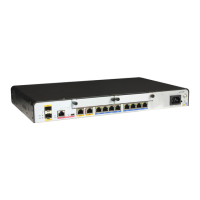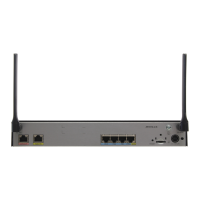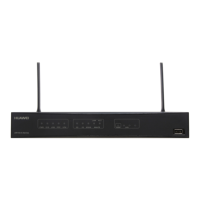NOTE
The 32-bit mask IP addresses of the loopback interfaces must be used to establish the MP-IBGP peer
relationship between PEs. This can ensure that the tunnel can be iterated. The route destined to the loopback
interface is advertised to the remote PE based on IGP on the MPLS backbone network.
Step 5 Run:
ipv4-family vpnv4 [ unicast ]
The BGP-VPNv4 address family is displayed.
Step 6 Run:
peer ipv4-address enable
The exchange of IPv4 VPN routes between the PE and ASBR in the same AS is enabled.
NOTE
In the AR1200, an ASBR can only change the next-hop address of a VPNv4 route to the ASBR's address
before advertising the route to a PE.
----End
3.7.3 Configuring MP-EBGP Between ASBRs in Different ASs
After the MP-EBGP peer relationship is established between ASBRs, either ASBR can advertise
the VPNv4 routes of its AS to the other ASBR.
Context
Perform the following steps on the ASBR.
Procedure
Step 1 Run:
system-view
The system view is displayed.
Step 2 Run:
interface interface-type interface-number
The view of the interface connected with the ASBR interface is displayed.
Step 3 Run:
ip address ip-address { mask | mask-length }
The interface IP address is configured.
Step 4 Run:
mpls
The MPLS capability is enabled.
Step 5 Run:
quit
Return to the system view.
Step 6 Run:
bgp as-number
Huawei AR1200 Series Enterprise Routers
Configuration Guide - VPN 3 BGP MPLS IP VPN Configuration
Issue 01 (2012-04-20) Huawei Proprietary and Confidential
Copyright © Huawei Technologies Co., Ltd.
98

